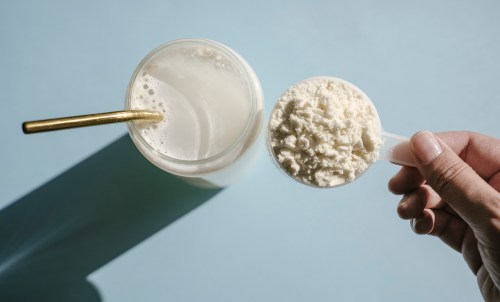I would like to believe that after years of tending to my skin, I know my complexion practically freckle by freckle. But during a recent facial, esthetician Sarah Akram revealed to me that I have hypopigmentation on my chin.
I’m well aware of my hyperpigmentation, aka the dark spots from an accumulation of sun damage, hormones, and/or post-inflammatory acne scars, but this is something different. It’s the opposite, actually. “Hypopigmentation is the loss of coloration in the skin, usually appearing as white spots, due to the loss of function in the skin cells that produce melanin, or skin pigment,” says Akram. So with hyperpigmentation, there’s an excess of pigment deposit in the skin, explains Craig Kraffert, MD, a dermatologist and president of Amarte, but “hypopigmentation means there’s a lack of melanin relative to surrounding areas,” he says.
Darker spots on the skin typically stem from inflammation, and so, too, do the causes of hypopigmentation (aside from skin conditions such as vitiligo); however, the culprits behind said inflammation are usually different. Keep scrolling for the reasons this could happen to you.
Why hypopigmentation occurs in the skin
1. Scarring and trauma to the skin: “Hypopigmentation is a disorder in which melanin, the natural pigmentation that occurs in skin, has been partially destroyed through trauma to the skin,” explains John Layke, DO, a plastic surgeon in Beverly Hills. Usually, this is related in some way to scarring, which can result in fewer melanocytes once a condition heals—think the after effects of burns or blisters.
This Parisian Skincare Brand Is Launching in the United States for the First Time—Here’s What a Derm Wants You to Know

We’re Calling It: Cleansing Balms Are the Face Wash of the Future—Here Are 3 to Add to Your Cart

This Is the One Product That Scarlett Johansson Always Keeps in Her Purse and on Her Bedside Table

2. Lasers: “Many times patients develop hypopigmentation during tattoo removal or laser treatments, as the particular chromophore target, or pigment, is destroyed,” he says. Interestingly, however, lasers can be used as a treatment to help restore pigment, when the right one is tapped. “The PiQo4 laser by Lumenis, for example, can be used on any skin type and can remove specific pigments without destroying the necessary surrounding pigment,” says Dr. Layke. “The treatment often can take time, however, if the melanin has been completely lost. Also, micro-needling or fractionated CO2 may assist in recovering lost pigment.”
3. Dryness: You can also get these lighter spots if you’re dealing with excessive dryness or scaling, as well. “Having excessive dryness and associated scaling may cause shedding, removing pigment along with the outer layers of epidermis—the stratum corneum—in a subtle way,” says Dr. Kraffert.
4. Certain skin-care ingredients: According to Dr. Kraffert, melanin production can become depressed from slathering on skin-care ingredients such as hydroquinone and other brightening agents. In addition, common ingredients such as alpha-hydroxy acids and prescription-strength retinoids when used in the wrong way could potentially result in this, so as with everything check with your dermatologist before incorporating one into your routine.
Even though it’s a melanin issue, like hyperpigmentation, treatment for hypopigmentation is much the same as for hyperpigmentation in terms of prevention: “The most effective treatment is making sure to properly protect your skin from sun damage with a physical SPF,” says Dr. Kraffert. “Hydration is also key, especially if dry skin irritation is triggering the problem.” So as with everything, layer on that SPF 365.
In case you were wondering, here’s how to get rid of acne scars, according to the derms. And these are the best skin serums that rival in-office treatments.
Sign Up for Our Daily Newsletter
Get all the latest in wellness, trends, food, fitness, beauty, and more delivered right to your inbox.
Got it, you've been added to our email list.








